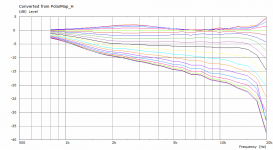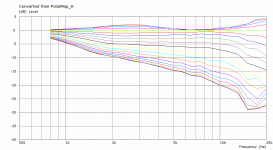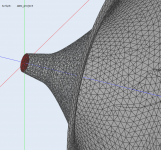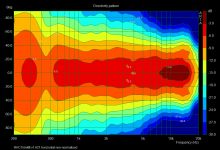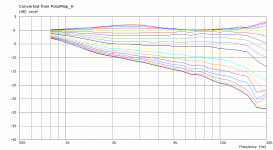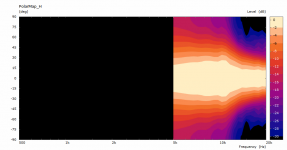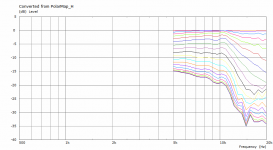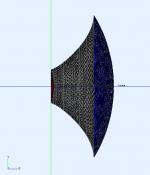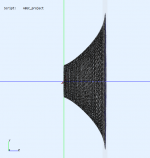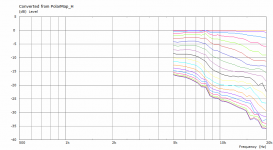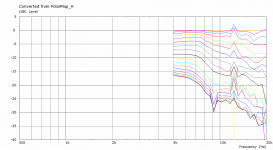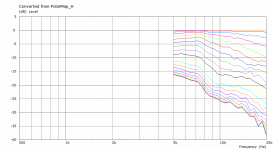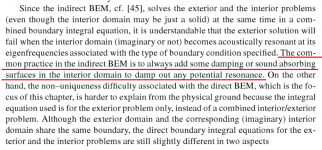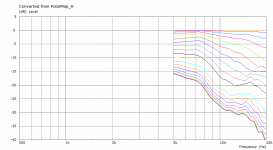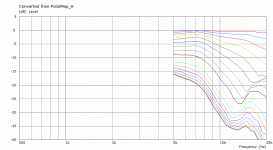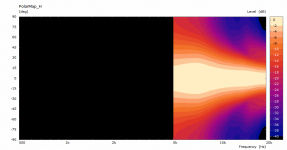I'm quite convinced that manufacturers don't match thier compression drivers to any particular horn, not even their own. For example B&C even admits this openly - that most of the customers use their own horns anyway. So I'd say that the "simple" universal goal is just to have a coherent plane wave at the exit of the driver, in whatever horn will be used. That's my impression.
That's true, but B&C is a much bigger and older company than the (acquired) 18Sound. 18Sound is a spin-off of the first RCF/Mackie split.
It is precisely 18Sound horns that are very popular among many smaller PA manufacturers.
Last edited:
Isn't it simply because these horns are not so bad after all? If I had to choose an off-the-shelf horn, I would probably choose 18Sound. But not because I'd think they are matched to their drivers in any special way.It is precisely 18Sound horns that are very popular among many smaller PA manufacturers.
In this regard it's pretty obvious: intended use.
Most manufacturers produce drivers for the purposes (needs) of their (prospected) clients.
The accessories (horns) reflect these needs. From the range of accessories it can be concluded that the majority of 18Sound's customers use the drivers for 2 or 3 way top / install speakers and line-arrays.
The horns are not exactly of the waveguide type, i.e. none of those features a rapid flare rate from the driver into the horn, perhaps with the exception of the XT1086.
One might argue, FaitalPro only sells Tractrix horns and yet some of their drivers (2") have a wide exit angle. Exceptions exist and these drivers were measured (and intended for use(?)) with non-Faital horns, presumably 2380 (derivatives), which happen to feature a surprisingly wide entry angle.
The throatless 18Sound 4015 drivers seem suitable for an (OS) waveguide at first glance, but I'm afraid they'll run out of steam in the top octave.
Angle and wavefront is not the same thing.
........If a real driver would emit a plane wavefront across the band, the exit size probably wouldn't matter much.
The exit size matters a lot for a plane wave as it sets the cut-in frequencies for the higher order modes - lower for larger throats, which is not good. It wouldn't matter for a spherical wave.
Nevermind, I considered the tube (part only) with a 1 vs 2" exit driver emitting plane waves.
What's the use of a waveguide with such a tube connected?
Or is the tube supposed to represent a driver's exit section?
What's the use of a waveguide with such a tube connected?
Or is the tube supposed to represent a driver's exit section?
Last edited:
Yes, it's supposed to represent the driver exit section. I just wanted to illustrate that it is not this part of the driver that would necessarily beam the sound by itself. I have seen this propagated on so many places that I felt it begs for clearing up.
Another comparison:
1" OS throat driven by a plane wave (still the same as the original one, throat angle = 0)
vs
1,4" OS throat driven by a conical section 1" deep, 24° included angle
1" OS throat driven by a plane wave (still the same as the original one, throat angle = 0)
vs
1,4" OS throat driven by a conical section 1" deep, 24° included angle
Attachments
........If a real driver would emit a plane wavefront across the band, the exit size probably wouldn't matter much.
The maximum reliable frequency that can be measured in a PWT is a function of its diameter. 1,22c/d, meaning a 2 inch exit driver measured in PWT will only provide us with a reliable result below 8,4kHz. However, as you can see, the length of the PWT is not a parameter in this function, so it will play a role in the drivers exit as well. This is not surprising as we commonly see 2 inch drivers are not capable of exceeding useful output past 14kHz.
Isn't the "pulling-out-of-the-wavefront-trick" of 1" drivers + OSWGs common knowledge?
The same trick seems to work for larger exits too, but (to my knowledge) it depends on the phase plug and the exit angle. If the phase plug doesn't support a wider beam, diffraction is the only way to obtain it.
The same trick seems to work for larger exits too, but (to my knowledge) it depends on the phase plug and the exit angle. If the phase plug doesn't support a wider beam, diffraction is the only way to obtain it.
This is not surprising as we commonly see 2 inch drivers are not capable of exceeding useful output past 14kHz.
To me, this is useful enough:
Attachments
Last edited:
Three different throats, each driven by a matching spherical wave:
a) 1,4" @ 9°
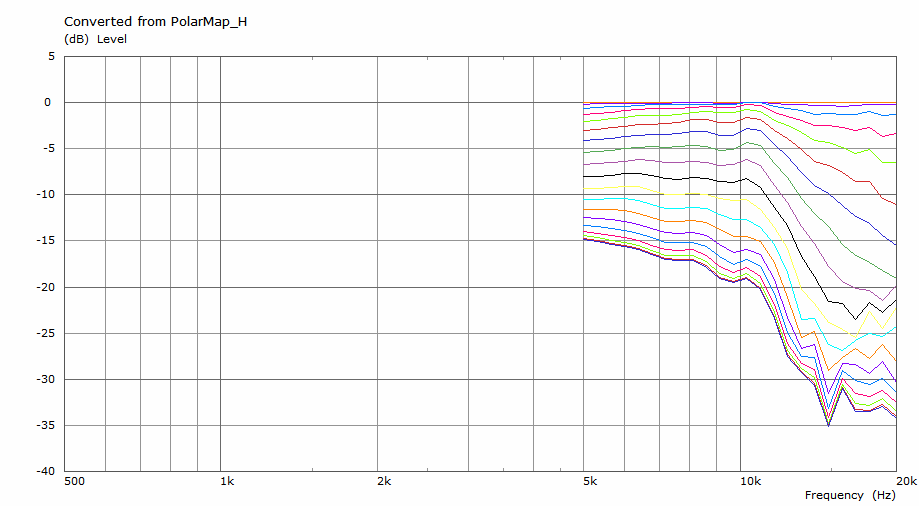
b) 1,4" @ 27°
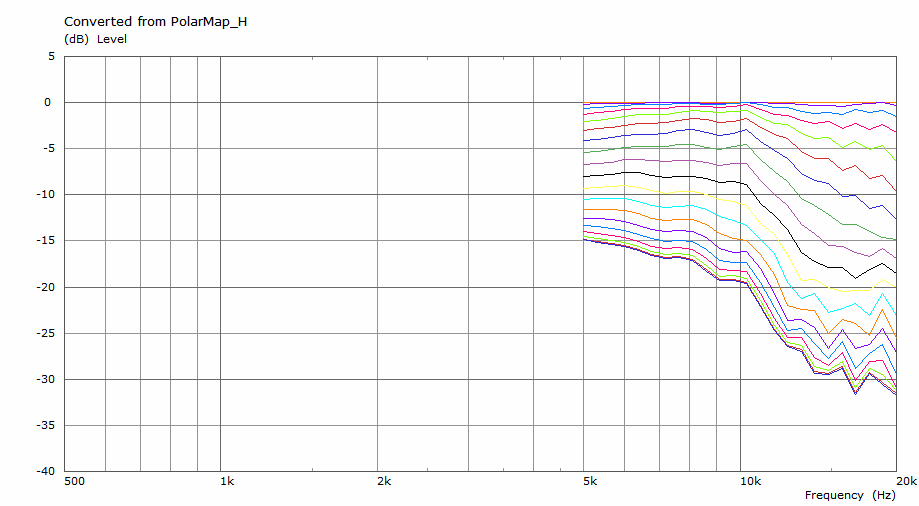
c) 2" @ 36°
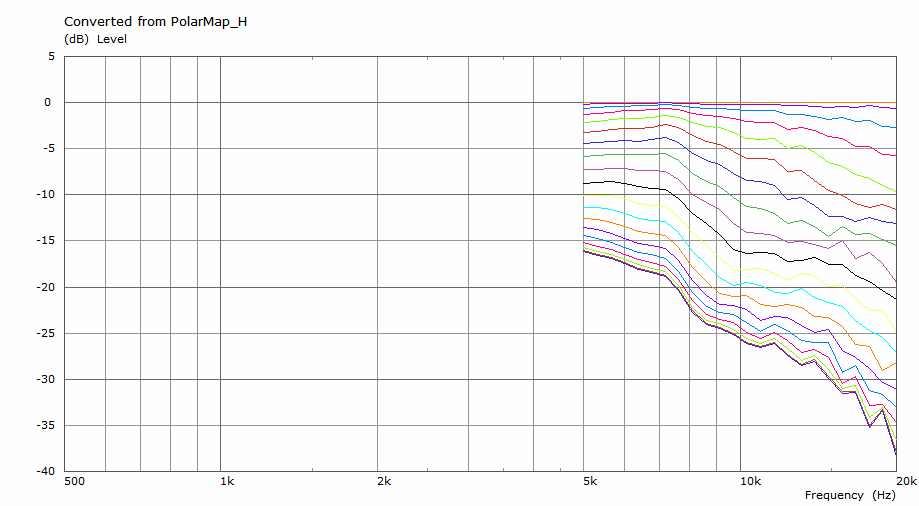
a) 1,4" @ 9°
b) 1,4" @ 27°
c) 2" @ 36°
Attachments
Now something for BEM/ABEC alone. There is always a boundary interfacing the interior and the exterior of the horn. This is a good opportunity to show a possible effect a particular shape of this surface has. What follows are three different shapes for the 2" throat from the above example:
Flat surface:
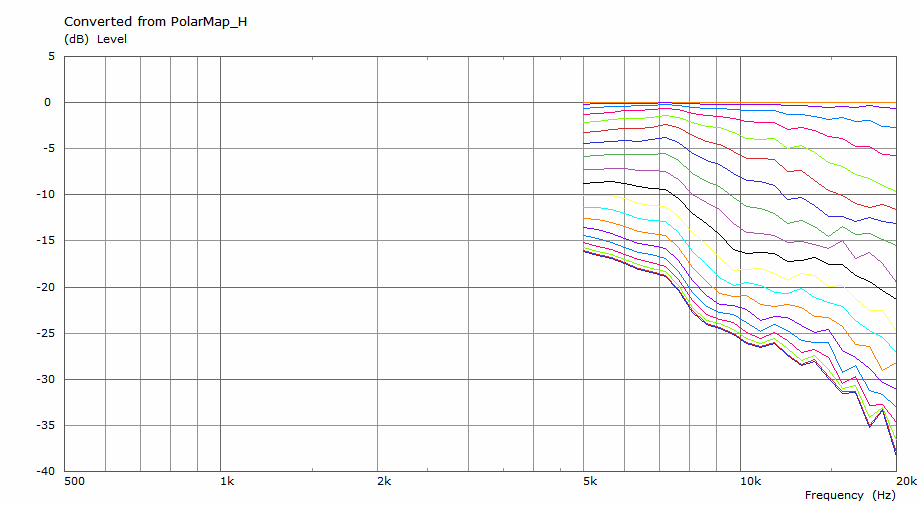
15 mm spherical draw:
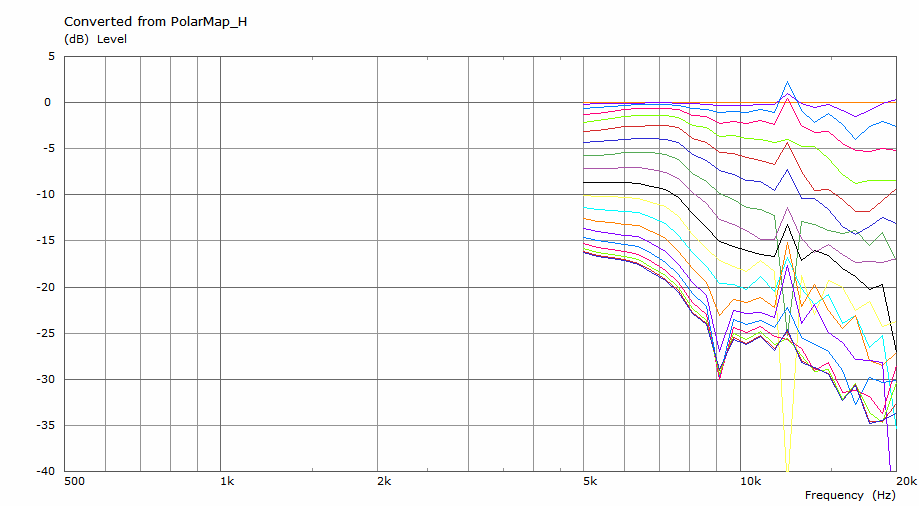
30 mm spherical draw:
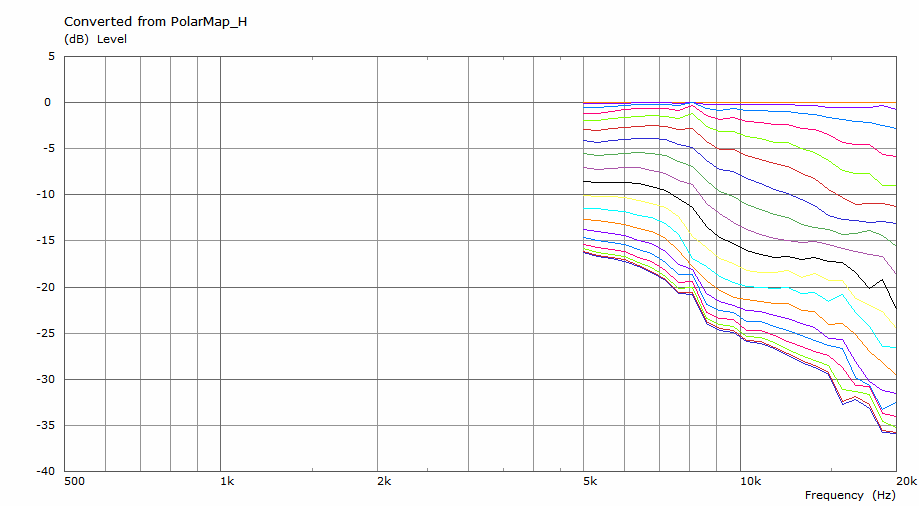
- I think I will leave there an option of setting the draw manually. It can help in case of a numeric trouble - it happens from time to time.
Flat surface:
15 mm spherical draw:
30 mm spherical draw:
- I think I will leave there an option of setting the draw manually. It can help in case of a numeric trouble - it happens from time to time.
Attachments
I suppose, that it is common non-uniqueness problem. You can also try to add a some small amount of damping to the wall of the internal interface
source (p. 412)
source (p. 412)
Attachments
Yeah, this does something. But is it really what we want?
- you mean like this:
WallImpedance "I1"
ImpType=Damping
RefElements="Horn"
Value=0.1
Value = 0.1:
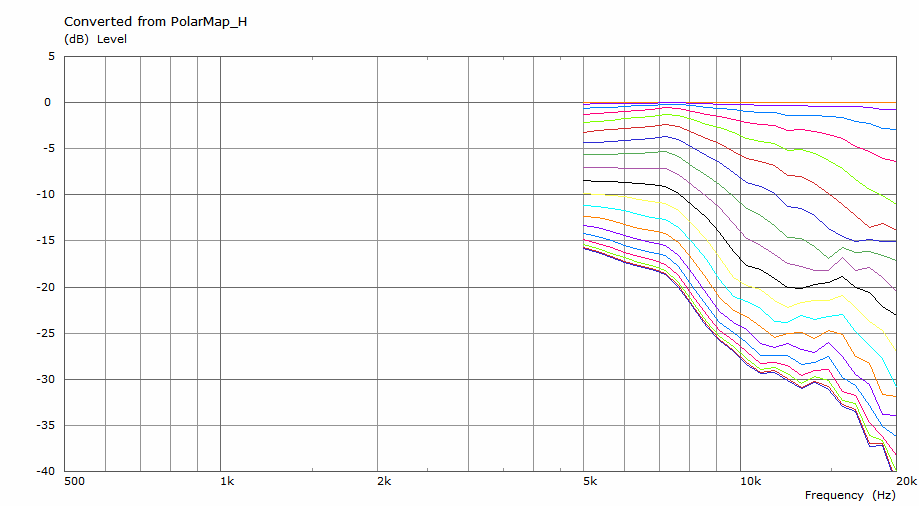
Value = 0.5:
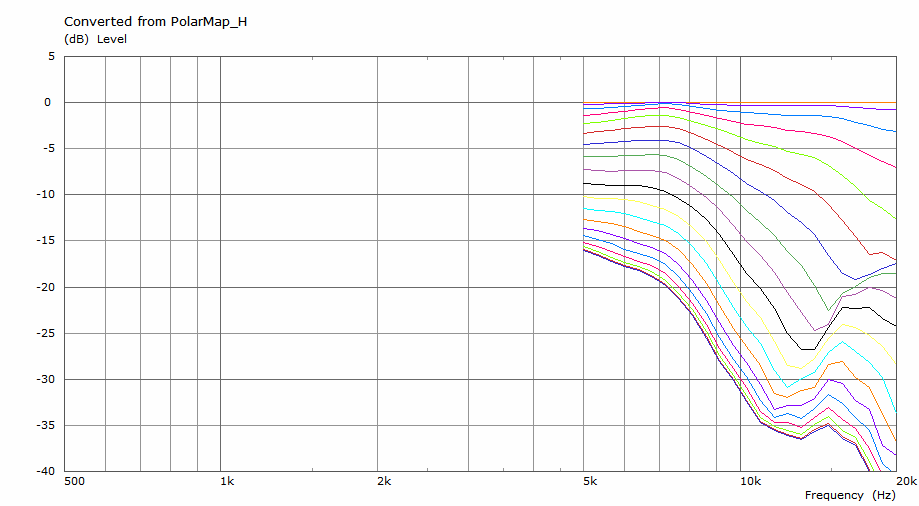
https://www.diyaudio.com/forums/attachment.php?attachmentid=857053&stc=1&d=1593601625
- you mean like this:
WallImpedance "I1"
ImpType=Damping
RefElements="Horn"
Value=0.1
Value = 0.1:
Value = 0.5:
https://www.diyaudio.com/forums/attachment.php?attachmentid=857053&stc=1&d=1593601625
Attachments
Ah, did you mean the "interface" (as in ABEC terminology)?...You can also try to add a some small amount of damping to the wall of the internal interface
In the above the damping was added to the walls of the waveguide.
- Home
- Loudspeakers
- Multi-Way
- Acoustic Horn Design – The Easy Way (Ath4)
